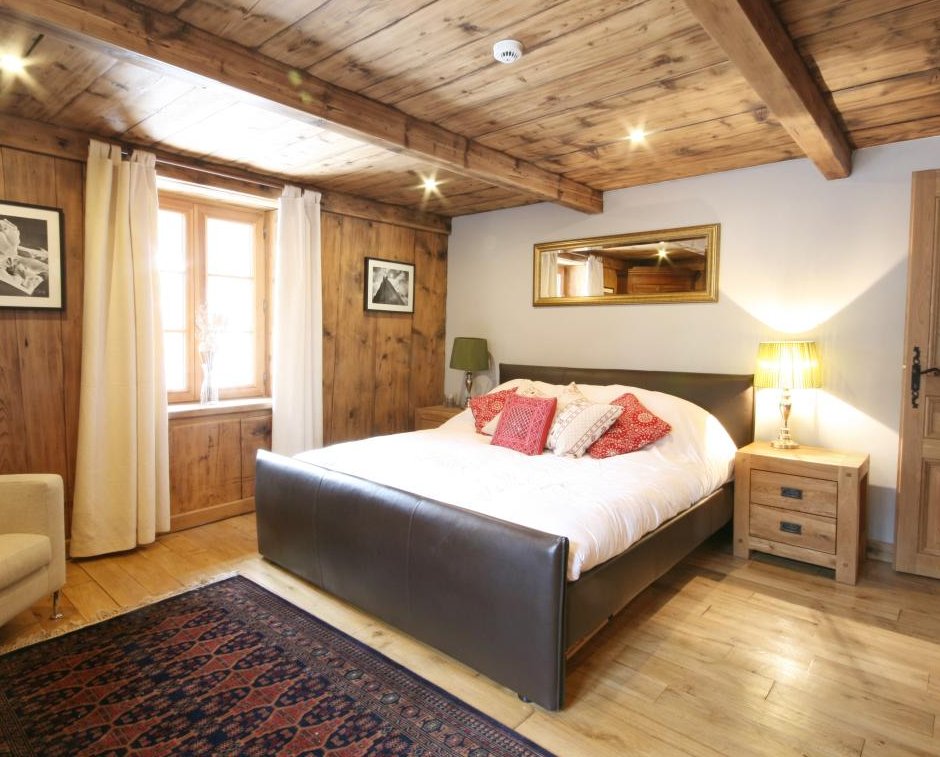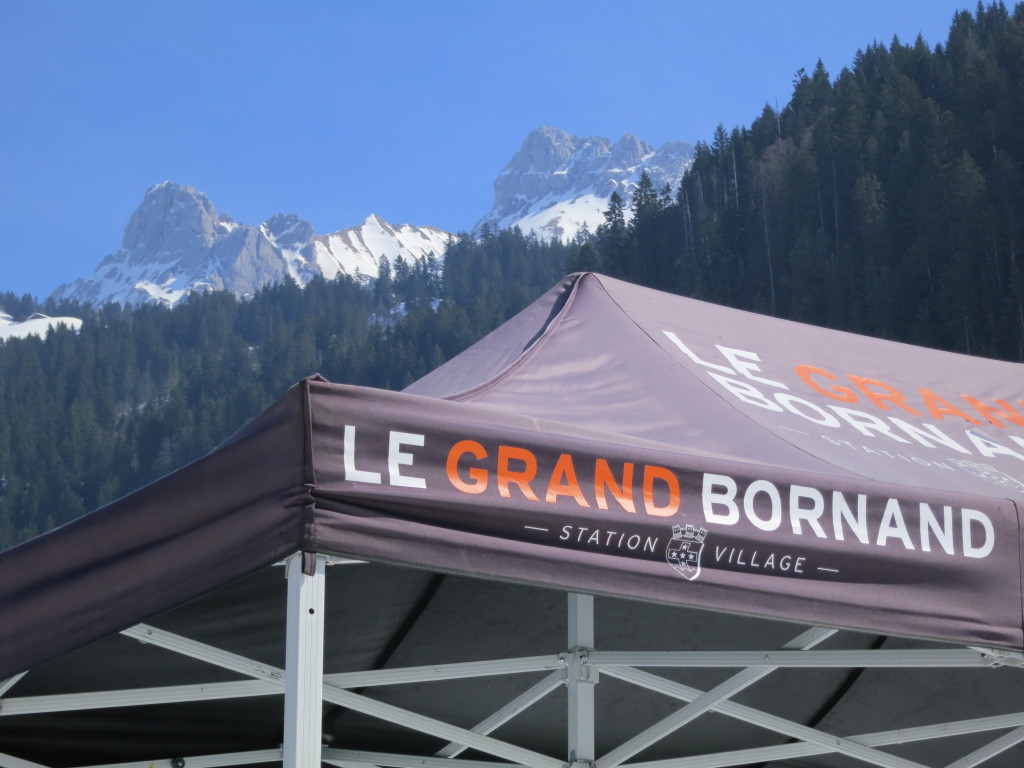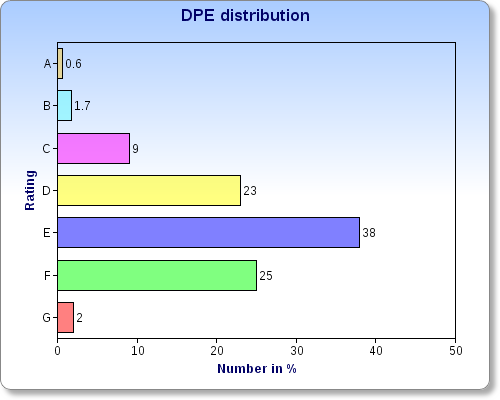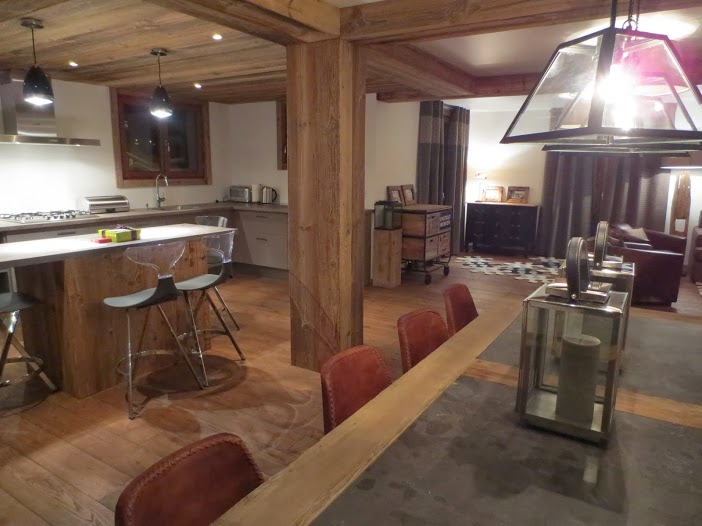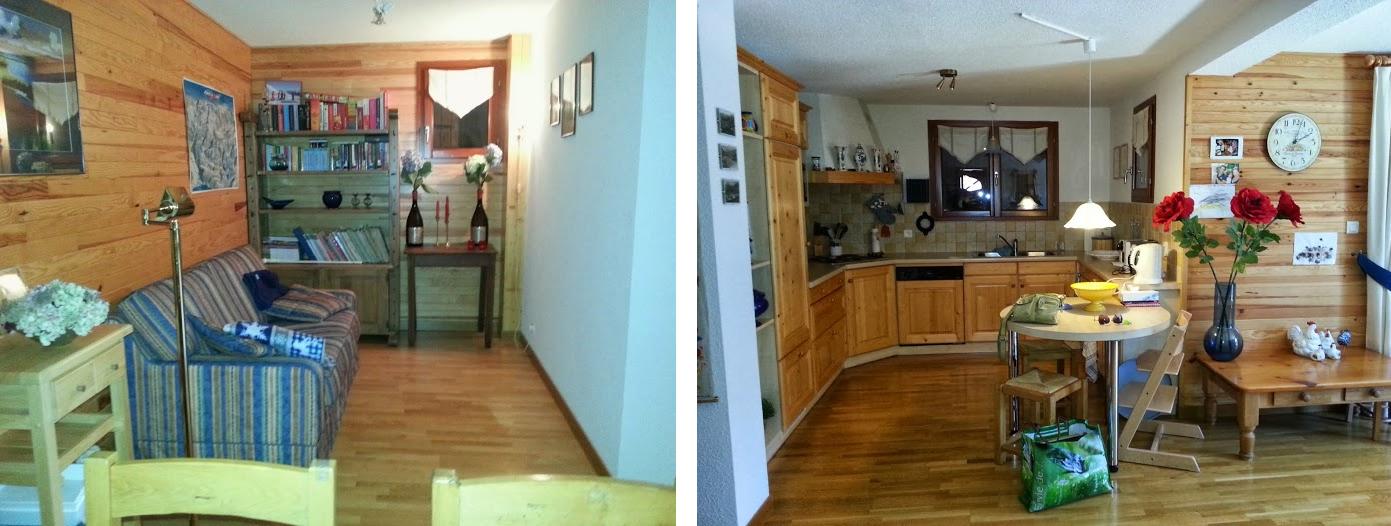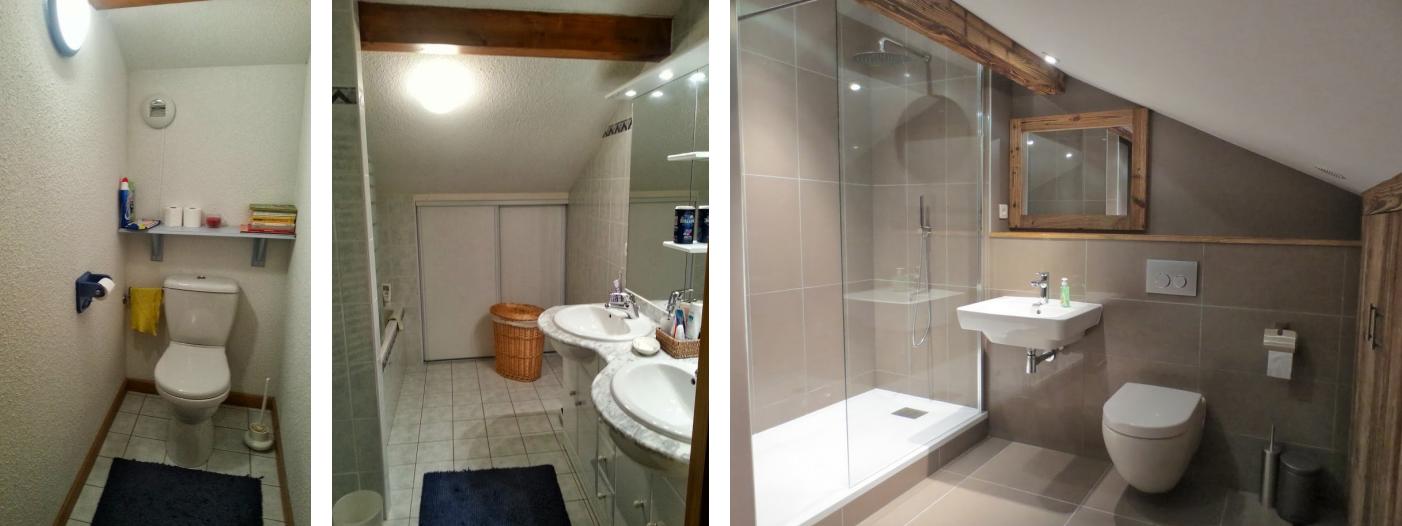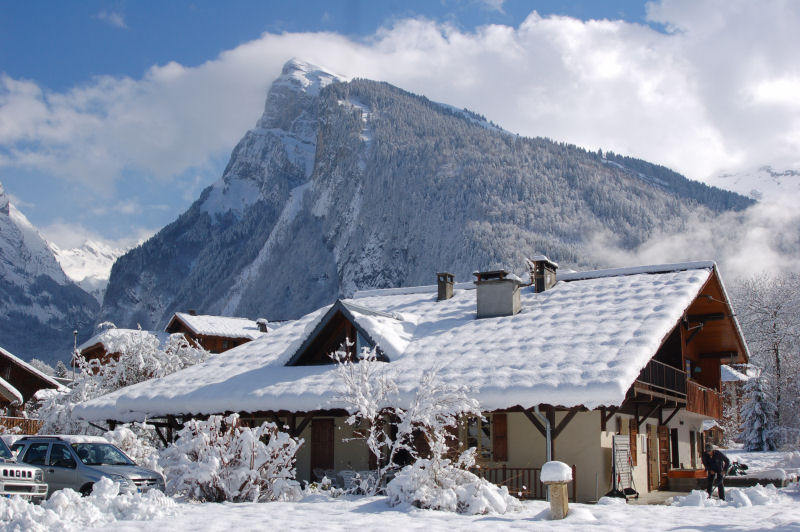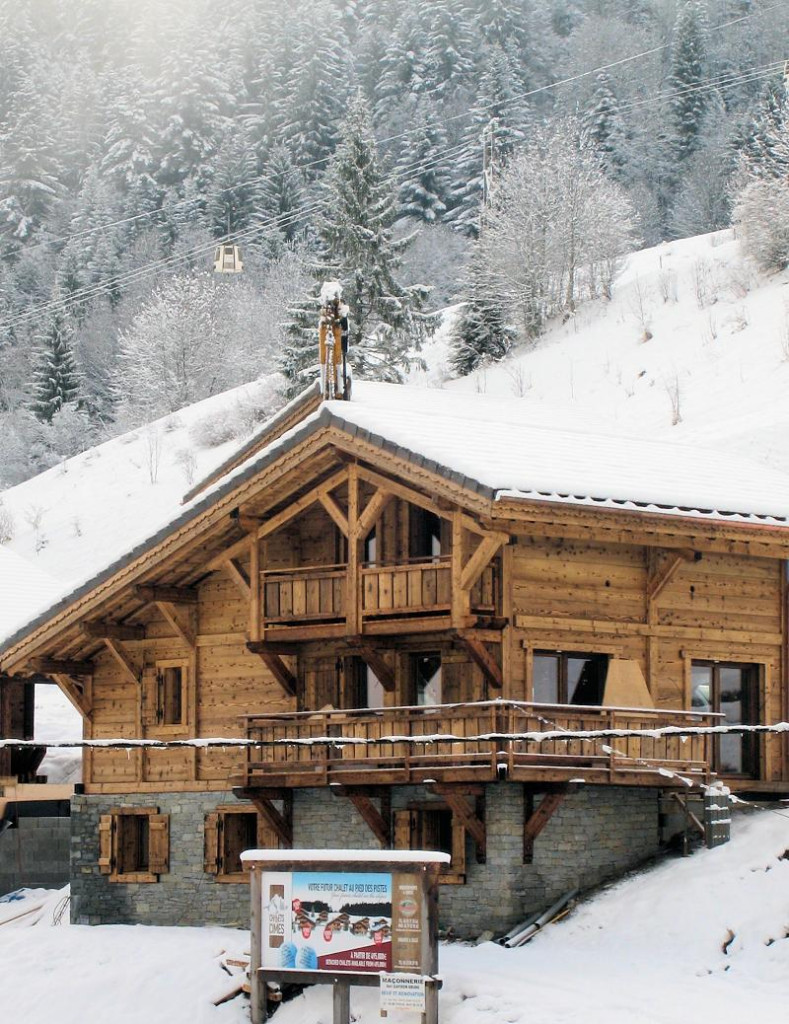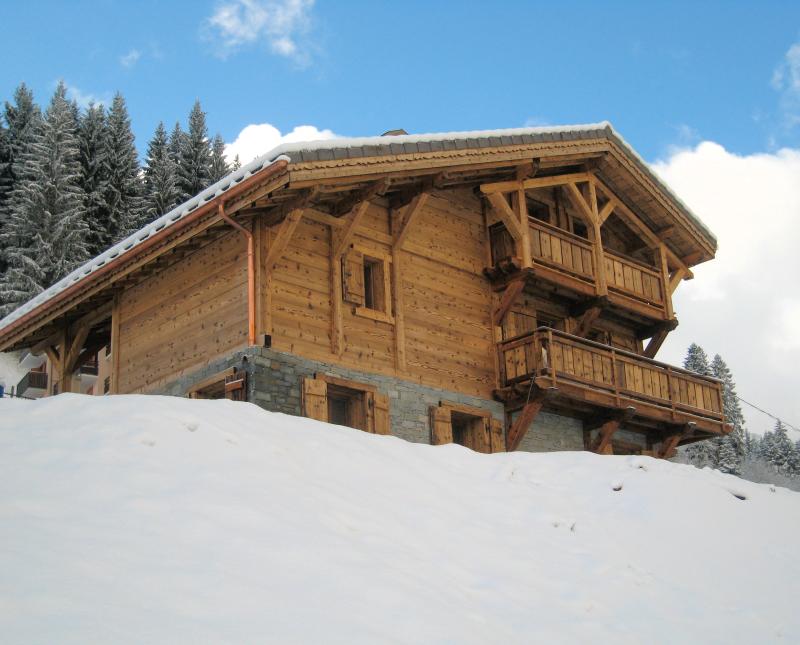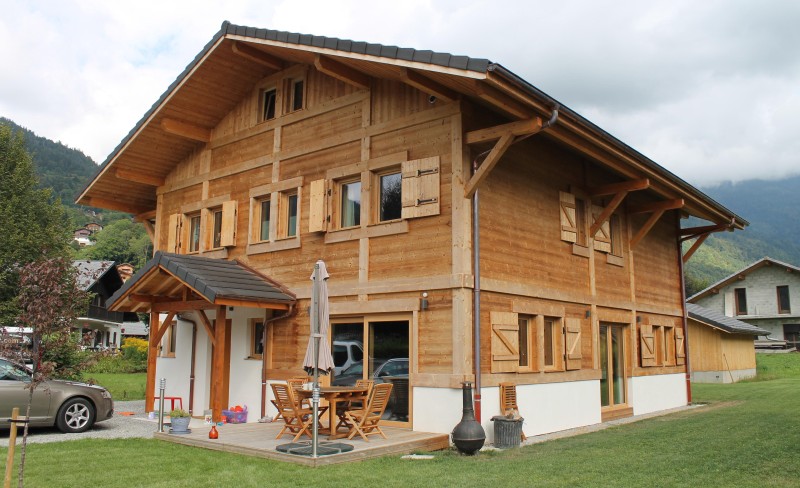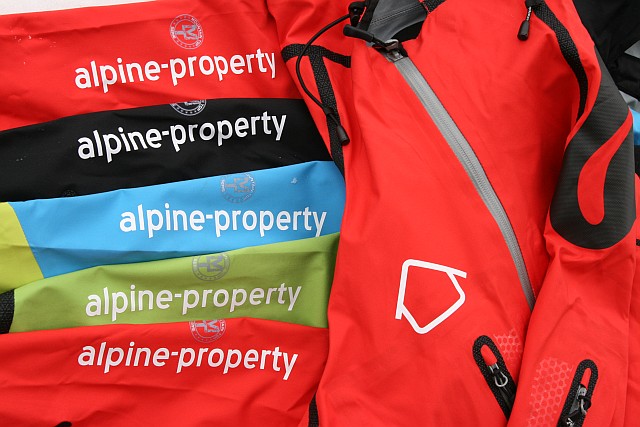So I know, this is the job of the Estate Agent. It doesn’t stop me writing about it though and there are things the owner of the property can do to help!
If you are trying to sell your house good photos are more important now than ever before. Most people are now using the internet as their first source when starting their property search. Good pictures = more interest. It’s as simple as that! In fact we are revamping our entire website with this thought in mind – let me know if you’d like a sneak preview!
One of the finest examples of the importance of good photos happened to us this winter. We took on a small (50m2) 2 bedroom property in St Gervais at 240,000€, the property had already been for sale for some time with some of the local agents but they had not achieved much. We took it on and our agent Sarah Watts took the photos. Within a week we’d had a dozen enquiries and in fact we’d secured a sale after 3 days. It was all down to presentation. The living area is pictured above.
So here are my tips.
- Use a decent camera. Digital cameras have come on leaps and bounds over the last few years. I recently did some tests with recent 250€ compact and compared the results to 7 year old digital SLR and the compact won. Under certain conditions the latest phones will outperform an older camera. Though I’m not suggesting you should use a phone as they don’t work well for all types of shot and definitely don’t use your tablet!
- Think ahead. Take some nice photos of your property before you decide to sell. I have some stock images of my house taken on a beautiful blue sky/powder day from a couple of years ago. Ready and waiting if I need to put my house on the market. You can’t expect the estate agent to be able to get these images themselves. This last winter is a good example, at no point have the lower villages had a good depth of snow for this type of photo.
- Prepare your chalet for the photos. Tidy up, de-clutter. Give the windows a clean. Tidy up the garden. You can take this to great lengths, Home Staging is an industry in itself and for good reason.
- Use a tripod for internal pictures. At a minimum steady yourself against a wall. 90% of the time you don’t want to use the flash. 100% of the time put every light on inside the house, one of my favourites in the cooker hood lights.
- Make sure your lens is clean.
- Open the shutters!
- Choose a sunny day with the sun on the “nice” side of the building.
- Internal shots are easiest on a dull day. Though logistically this makesthe previous point difficult.
- Try and take the pictures “straight”, pick a vertical line in the centre of the room and use that as a reference, if you fail make sure you straighten them later.
- Think about varying the height of your shots. Get down low in the smaller rooms, a shot taken across the corner of a bed can work, so take a shot at 0.8m height not 1.6m.
- Keep the originals! Don’t resize and overwrite!
- A note for the Estate Agent. Take along a spare memory card, a spare battery, a torch, pen and paper and a digital measure! I take a spare camera plus a floodlight and extension lead, I know some that take an extension so the can lift the camera up high on the outside pictures.



